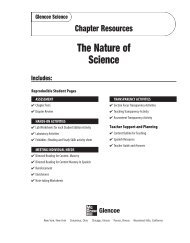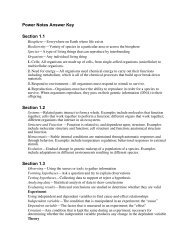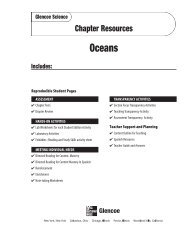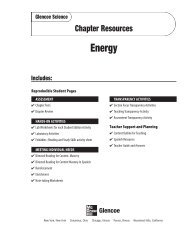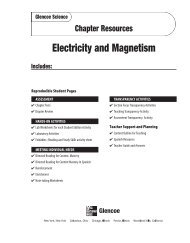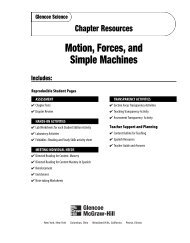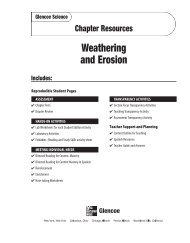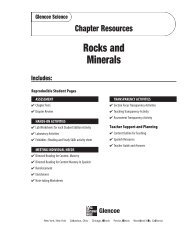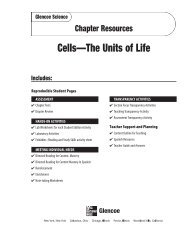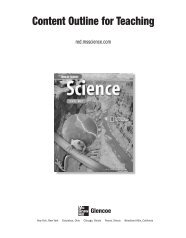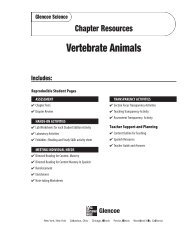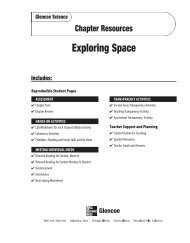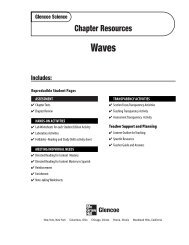Chapter 21 Resource: Ecology
Chapter 21 Resource: Ecology
Chapter 21 Resource: Ecology
- No tags were found...
You also want an ePaper? Increase the reach of your titles
YUMPU automatically turns print PDFs into web optimized ePapers that Google loves.
Teacher Support & PlanningTeacher Guide & Answers (continued)Extensions■ Debate: Today, many “wild animals” have adaptedto urban environments. The most common areraccoons and opossums, but deer, coyotes, andeven mountain lions are found in cities andsuburbs. Have students research the situation anddebate management options cities have instituted.■ Demonstration: Visit a zoo exhibit (or view avideotape) that represents an entire ecosystemsuch as a rain forest. Then have students prepare amural depicting the food web in the exhibit.Answers to Student Worksheet1. producer; consumer; predator live off deadorganisms and waste products2. Possible answer: Sparrows also eat seeds. Studentsmay also include grubs or caterpillars; if so, donot consider the answer incorrect, but point outthat these are immature forms of insects.3. Possible answer: These animals don’t have tocompete with each other for food, so they don’thave to fight over food or spread out into muchlarger territories. They also are in less danger thattheir food supplies will run out.4. Answers will vary. Possible answers: roachesspiders-ferrets;mice-cats-dogs; mosquitoesspiders-dragonflies.Assessment Transparency (page 45)<strong>Ecology</strong>Answers1. C. This question asks students to read the chartand determine which of the relationships matchesthe description given—benefiting both participants.Choice C, mutualism, is the only correctanswer. Parasitism has a negative effect on one ofthe participants. Commensalism has a neutraleffect on one of the participants. Symbiosiscorrectly describes all of these relationships.2. J. This question asks students to read the chartand match the example given with the descriptionsin the chart. Choice J, parasitism, is the correctanswer. The fleas benefit because the dog providesnot only a habitat but also a food source. Thedogs are harmed by the bites, which itch and canbecome infected or cause allergic reactions.3. C. This question requires students to relate theinformation in the chart to the concept ofpopulation density. Students are looking for therelationships that have only a positive or neutraleffect on population density, so choice C is thecorrect answer.Test-Taking TipRemind students to read the column headingscarefully as they look for the correct answers.Copyright © Glencoe/McGraw-Hill, a division of the McGraw-Hill Companies, Inc.T14<strong>Ecology</strong>




